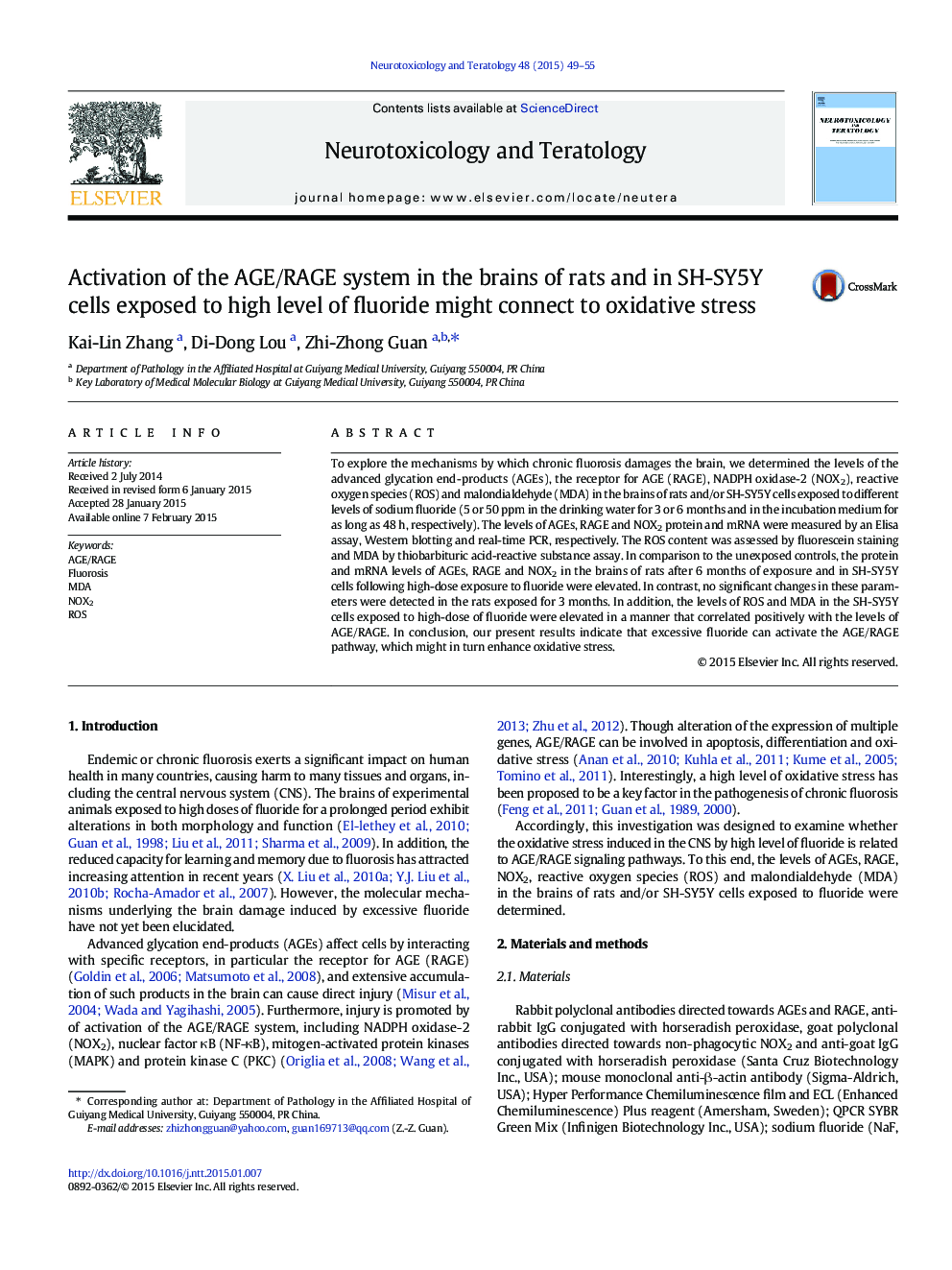| کد مقاله | کد نشریه | سال انتشار | مقاله انگلیسی | نسخه تمام متن |
|---|---|---|---|---|
| 2590912 | 1562087 | 2015 | 7 صفحه PDF | دانلود رایگان |

• AGE, RAGE and NOX2 protein and mRNA in the the rat brains and SH-SY5Y cells exposed to high fluoride were elevated.
• ROS and MDA in the SH-SY5Y cells exposed to high fluoride were increased showing positive correlations with AGE/RAGE.
• The results suggest that excessive fluoride can activate the AGE/RAGE pathway, which might in turn enhance oxidative stress.
To explore the mechanisms by which chronic fluorosis damages the brain, we determined the levels of the advanced glycation end-products (AGEs), the receptor for AGE (RAGE), NADPH oxidase-2 (NOX2), reactive oxygen species (ROS) and malondialdehyde (MDA) in the brains of rats and/or SH-SY5Y cells exposed to different levels of sodium fluoride (5 or 50 ppm in the drinking water for 3 or 6 months and in the incubation medium for as long as 48 h, respectively). The levels of AGEs, RAGE and NOX2 protein and mRNA were measured by an Elisa assay, Western blotting and real-time PCR, respectively. The ROS content was assessed by fluorescein staining and MDA by thiobarbituric acid-reactive substance assay. In comparison to the unexposed controls, the protein and mRNA levels of AGEs, RAGE and NOX2 in the brains of rats after 6 months of exposure and in SH-SY5Y cells following high-dose exposure to fluoride were elevated. In contrast, no significant changes in these parameters were detected in the rats exposed for 3 months. In addition, the levels of ROS and MDA in the SH-SY5Y cells exposed to high-dose of fluoride were elevated in a manner that correlated positively with the levels of AGE/RAGE. In conclusion, our present results indicate that excessive fluoride can activate the AGE/RAGE pathway, which might in turn enhance oxidative stress.
Journal: Neurotoxicology and Teratology - Volume 48, March–April 2015, Pages 49–55